
How to Use L298N Motor Driver: Examples, Pinouts, and Specs
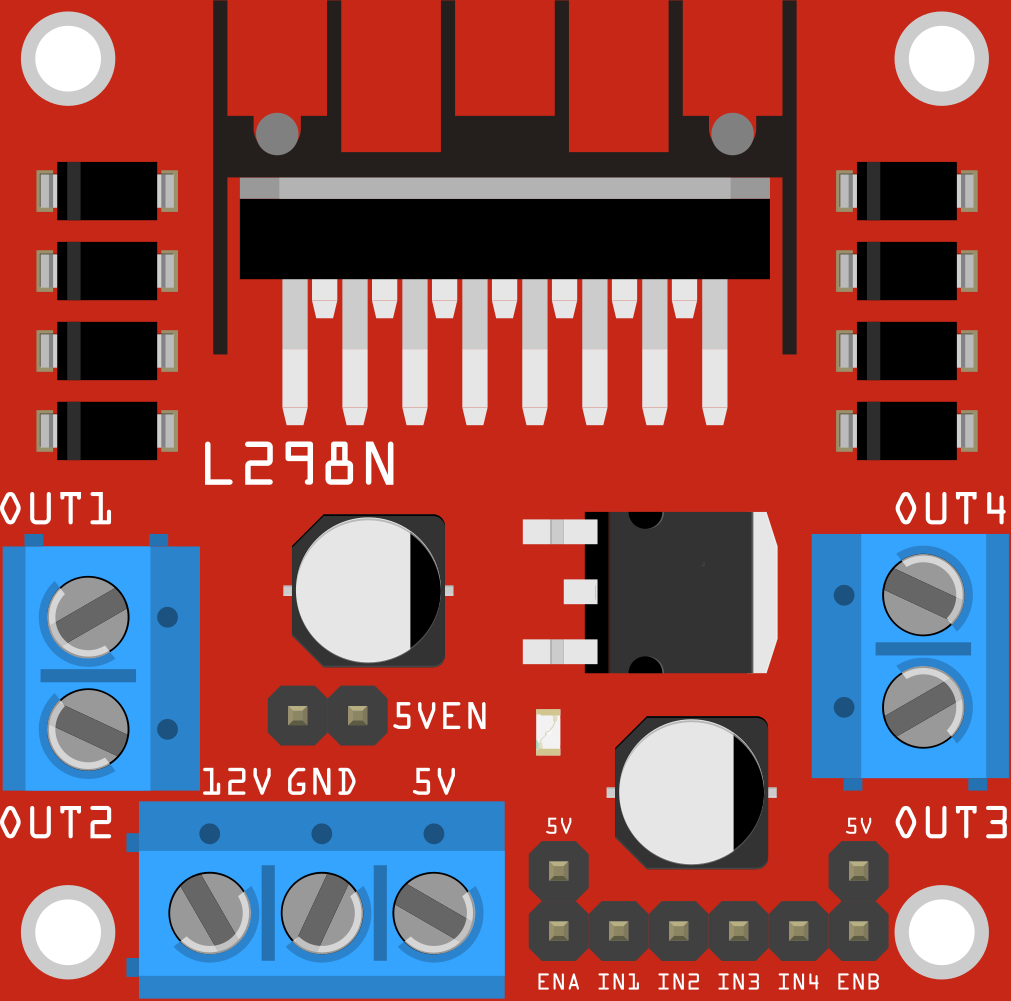
 Design with L298N Motor Driver in Cirkit Designer
Design with L298N Motor Driver in Cirkit DesignerIntroduction
The L298N Motor Driver, manufactured by QWER (Part ID: L298N), is an integrated circuit designed to control two DC motors or a single stepper motor. It supports bidirectional control and speed regulation using PWM (Pulse Width Modulation). With a current handling capacity of up to 2A per channel and an operating voltage range of 5V to 35V, the L298N is a versatile and reliable choice for robotics, automation, and motor control applications.
Explore Projects Built with L298N Motor Driver
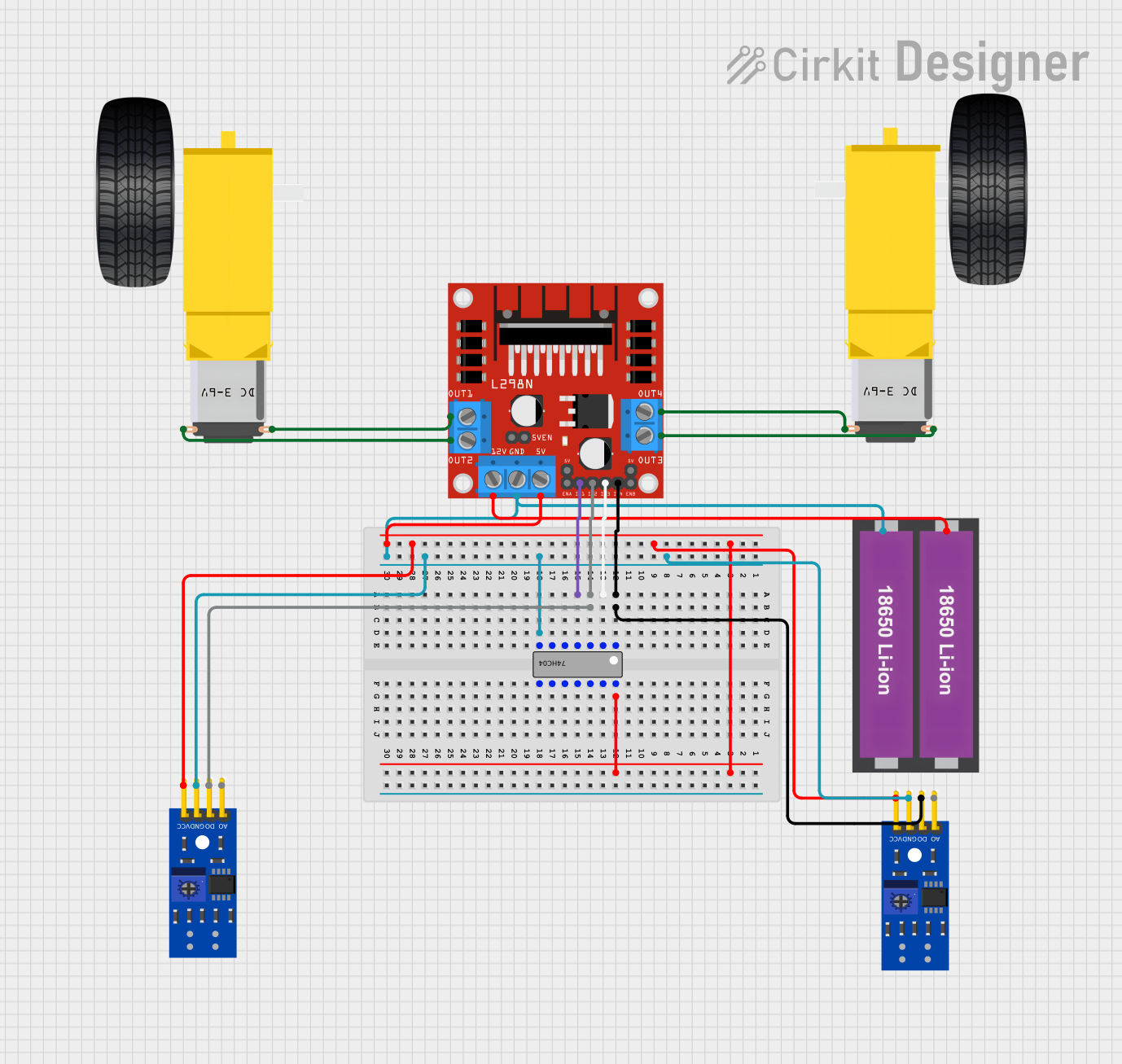
 Open Project in Cirkit Designer
Open Project in Cirkit Designer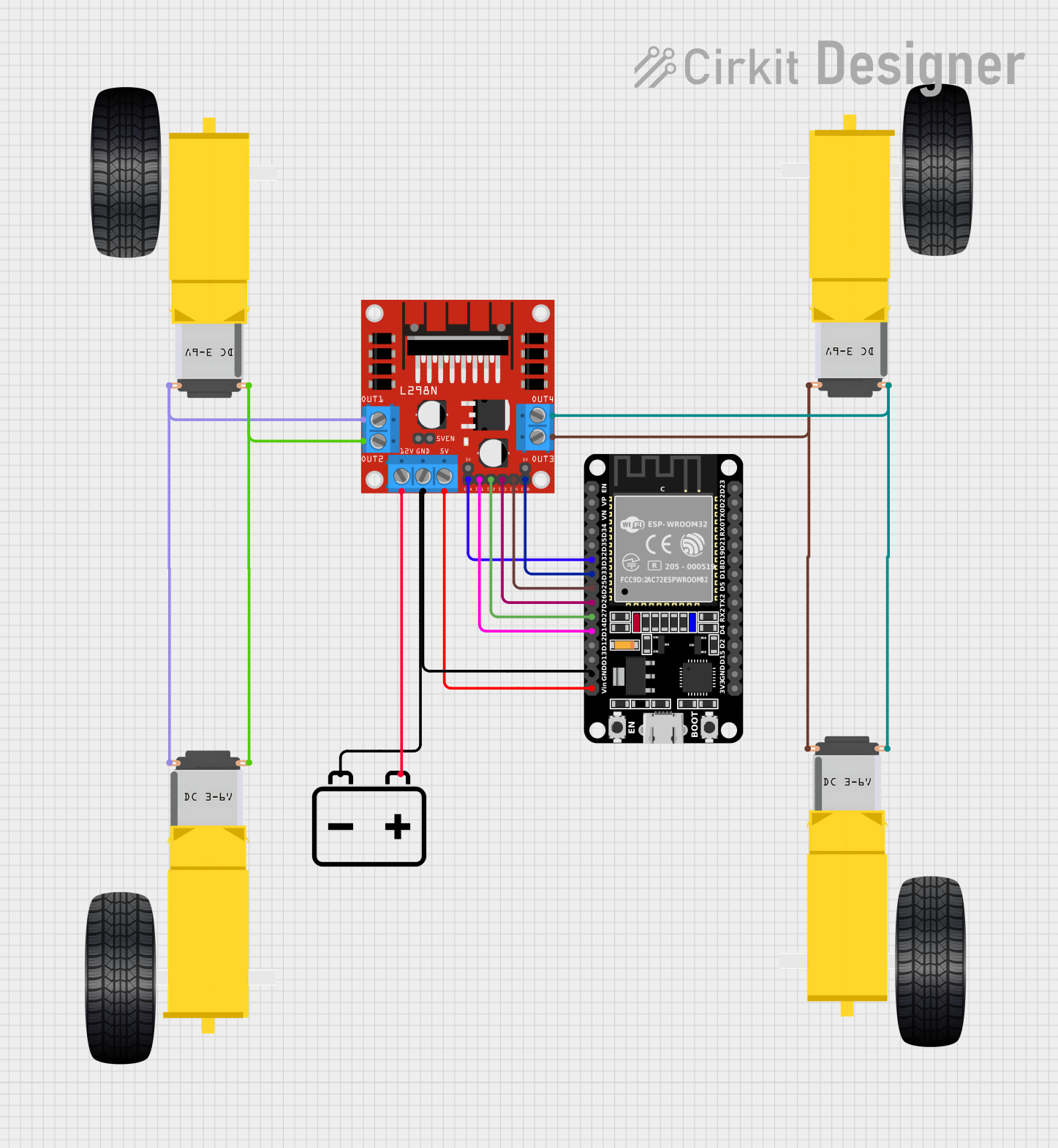
 Open Project in Cirkit Designer
Open Project in Cirkit Designer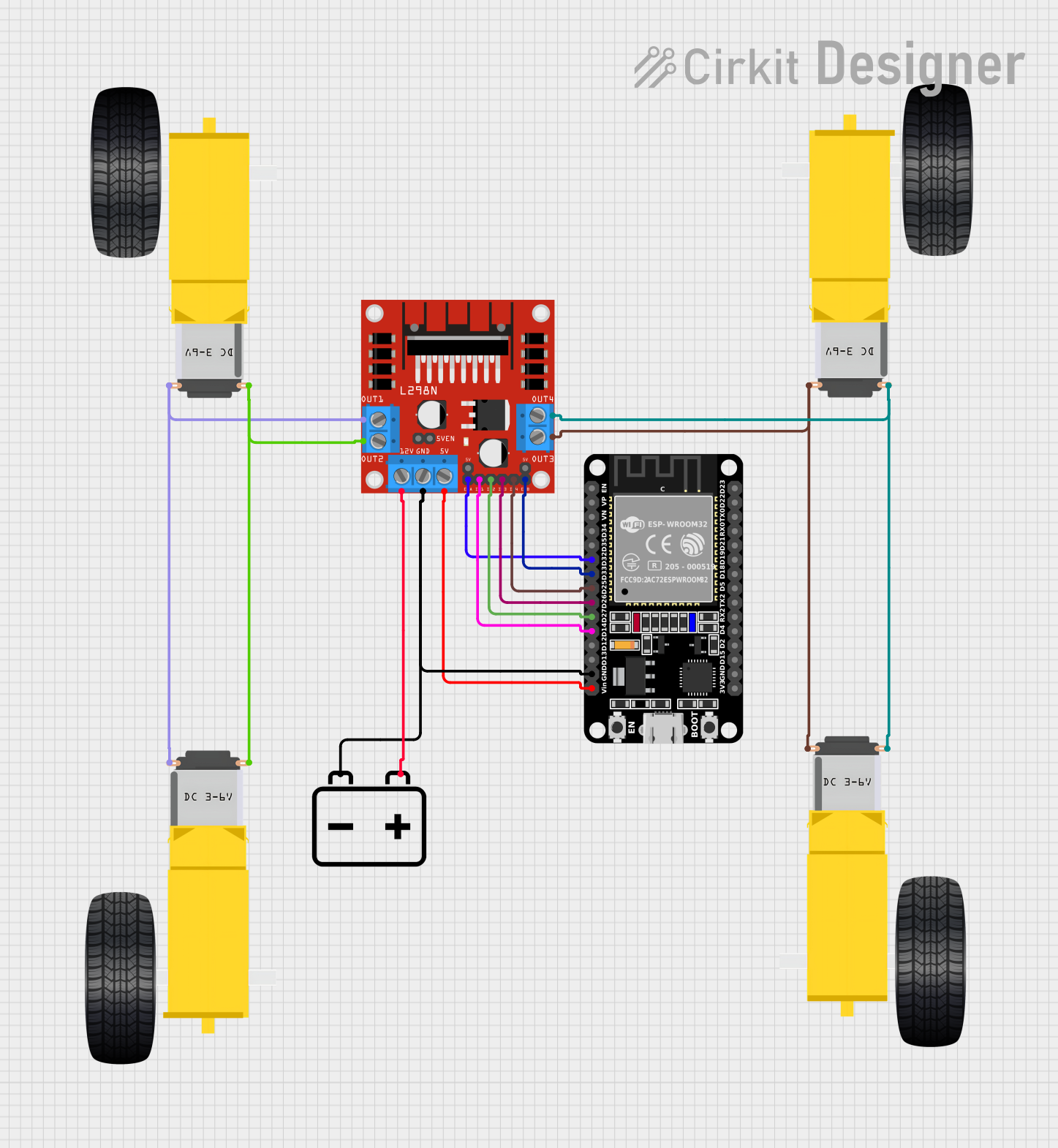
 Open Project in Cirkit Designer
Open Project in Cirkit Designer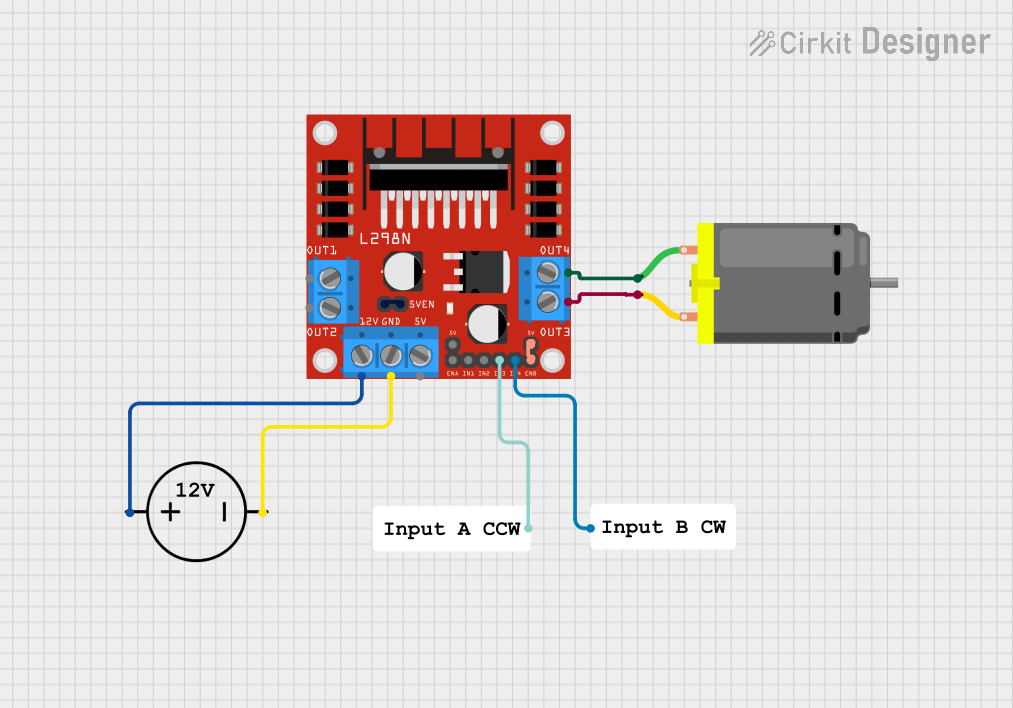
 Open Project in Cirkit Designer
Open Project in Cirkit DesignerExplore Projects Built with L298N Motor Driver

 Open Project in Cirkit Designer
Open Project in Cirkit Designer
 Open Project in Cirkit Designer
Open Project in Cirkit Designer
 Open Project in Cirkit Designer
Open Project in Cirkit Designer
 Open Project in Cirkit Designer
Open Project in Cirkit DesignerCommon Applications
- Robotics: Driving wheels or robotic arms
- Automation systems: Conveyor belts, actuators
- DIY projects: RC cars, drones, and other motorized devices
- Stepper motor control for CNC machines or 3D printers
Technical Specifications
Below are the key technical details of the L298N Motor Driver:
| Parameter | Value |
|---|---|
| Manufacturer | QWER |
| Part ID | L298N |
| Operating Voltage | 5V to 35V |
| Maximum Current | 2A per channel |
| Logic Voltage | 5V |
| PWM Frequency | Up to 20 kHz |
| Number of Channels | 2 (H-Bridge configuration) |
| Motor Types Supported | DC motors, stepper motors |
| Operating Temperature | -25°C to +130°C |
Pin Configuration and Descriptions
The L298N Motor Driver has the following pin configuration:
| Pin Name | Pin Type | Description |
|---|---|---|
| IN1 | Input | Control input for Motor A (logic HIGH or LOW) |
| IN2 | Input | Control input for Motor A (logic HIGH or LOW) |
| IN3 | Input | Control input for Motor B (logic HIGH or LOW) |
| IN4 | Input | Control input for Motor B (logic HIGH or LOW) |
| ENA | Input (PWM) | Enable pin for Motor A (connect to PWM for speed control) |
| ENB | Input (PWM) | Enable pin for Motor B (connect to PWM for speed control) |
| OUT1 | Output | Output to Motor A terminal 1 |
| OUT2 | Output | Output to Motor A terminal 2 |
| OUT3 | Output | Output to Motor B terminal 1 |
| OUT4 | Output | Output to Motor B terminal 2 |
| VCC | Power Input | Motor power supply (5V to 35V) |
| GND | Ground | Common ground |
| 5V | Power Output | 5V output (used to power logic circuits if needed) |
Usage Instructions
How to Use the L298N in a Circuit
Power Connections:
- Connect the motor power supply to the
VCCpin (5V to 35V). - Connect the ground of the power supply to the
GNDpin. - If the motor power supply is above 7V, you can use the onboard 5V regulator to power the logic circuit by connecting the
5Vpin to your microcontroller.
- Connect the motor power supply to the
Motor Connections:
- For Motor A, connect its terminals to
OUT1andOUT2. - For Motor B, connect its terminals to
OUT3andOUT4.
- For Motor A, connect its terminals to
Control Connections:
- Connect the
IN1andIN2pins to your microcontroller to control Motor A's direction. - Connect the
IN3andIN4pins to your microcontroller to control Motor B's direction. - Use the
ENAandENBpins for speed control by providing a PWM signal.
- Connect the
Logic Power:
- If using an external 5V logic power source, connect it to the
5Vpin. Ensure the ground of the logic power source is connected to theGNDpin.
- If using an external 5V logic power source, connect it to the
Important Considerations
- Heat Dissipation: The L298N can get hot during operation. Use a heatsink or active cooling for high-current applications.
- Current Limitation: Ensure the motor's current does not exceed 2A per channel to avoid damage.
- Flyback Diodes: The L298N has built-in flyback diodes to protect against voltage spikes caused by motor inductance.
Example: Connecting to an Arduino UNO
Below is an example of how to control a DC motor using the L298N and an Arduino UNO:
Circuit Connections
- Connect
ENAto Arduino pin 9 (PWM output). - Connect
IN1to Arduino pin 8. - Connect
IN2to Arduino pin 7. - Connect the motor terminals to
OUT1andOUT2. - Connect the motor power supply to
VCCandGND.
Arduino Code
// L298N Motor Driver Example with Arduino UNO
// Controls a single DC motor connected to Motor A
#define ENA 9 // PWM pin for speed control
#define IN1 8 // Direction control pin 1
#define IN2 7 // Direction control pin 2
void setup() {
// Set motor control pins as outputs
pinMode(ENA, OUTPUT);
pinMode(IN1, OUTPUT);
pinMode(IN2, OUTPUT);
}
void loop() {
// Rotate motor forward
digitalWrite(IN1, HIGH); // Set IN1 HIGH
digitalWrite(IN2, LOW); // Set IN2 LOW
analogWrite(ENA, 150); // Set speed (0-255)
delay(2000); // Run for 2 seconds
// Rotate motor backward
digitalWrite(IN1, LOW); // Set IN1 LOW
digitalWrite(IN2, HIGH); // Set IN2 HIGH
analogWrite(ENA, 150); // Set speed (0-255)
delay(2000); // Run for 2 seconds
// Stop motor
digitalWrite(IN1, LOW); // Set IN1 LOW
digitalWrite(IN2, LOW); // Set IN2 LOW
analogWrite(ENA, 0); // Set speed to 0
delay(2000); // Wait for 2 seconds
}
Troubleshooting and FAQs
Common Issues
Motor Not Spinning:
- Check the power supply voltage and ensure it matches the motor's requirements.
- Verify the connections to the
INandOUTpins. - Ensure the
ENAorENBpin is receiving a PWM signal or is set HIGH.
Overheating:
- Ensure the current drawn by the motor does not exceed 2A per channel.
- Use a heatsink or active cooling for high-current applications.
Noisy Motor Operation:
- Check for loose connections.
- Use capacitors across the motor terminals to reduce electrical noise.
FAQs
Q: Can the L298N control stepper motors?
A: Yes, the L298N can control a bipolar stepper motor by using both channels (Motor A and Motor B).
Q: Can I use the onboard 5V regulator to power my Arduino?
A: Yes, if the motor power supply is above 7V, the onboard 5V regulator can provide power to the Arduino. However, ensure the current draw does not exceed the regulator's capacity.
Q: What is the maximum PWM frequency supported?
A: The L298N supports PWM frequencies up to 20 kHz.
Q: Can I control more than two motors with one L298N?
A: No, the L298N can control only two DC motors or one stepper motor. For additional motors, use multiple L298N modules.